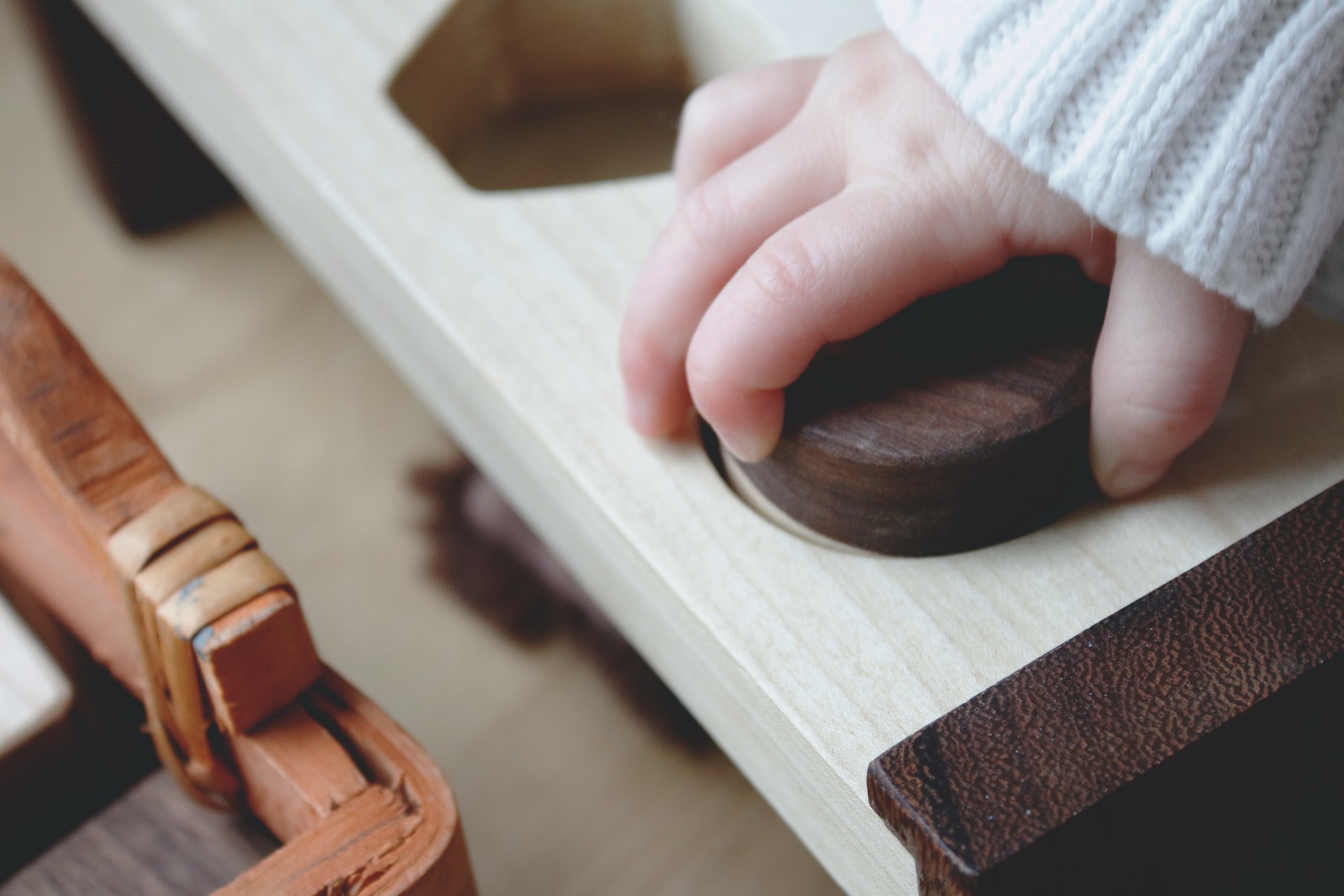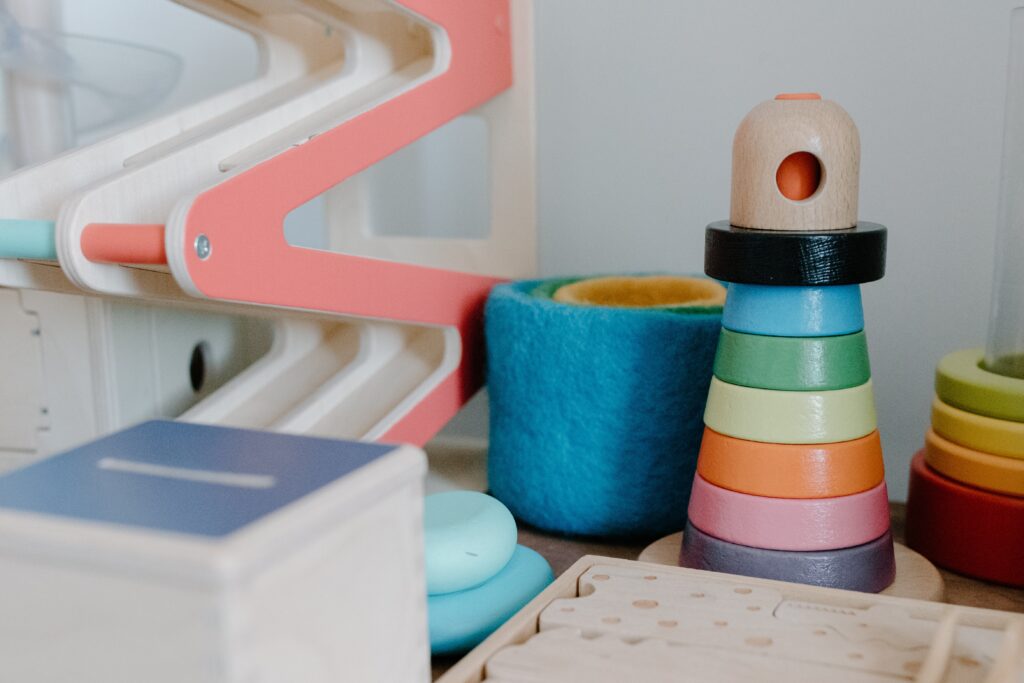
Keeping it Simple! Toys

Avoid clutter and keep things simple. Discover what you really need to keep your little one entertained and help them grow without going overboard.
Toys are not only fun but a necessary part of a baby’s social and physical development. There are literally millions of options out there but before you go crazy and turn your home into Toyland, I suggest making a plan.
It’s easy to see something cute and think that your precious little one HAS to have it. Similar to the nursery, we didn’t want to fill and clutter our house with baby stuff that would either not get used or would only be used for a few short weeks before being discarded. We also wanted to make sure that the toys that we had would help our son develop his social, emotional, and motor skills.
In this post, I’ll go over some of the toys we found to be necessary and why we chose to avoid others.

Toy Necessities
- Age-Appropriate Toys That Can Grow With Baby
- Non-Toy Toys
- Play Gym

Age-Appropriate Toys to Grow With
Some toys are timeless while others are cute but rather useless. It’s also important to introduce toys at appropriate times. You wouldn’t want to give your 6-month-old a treehouse or your 2-year-old a rattle.
In the beginning, high-contrast mobiles, black and white cards, and simple rattles are important as your little one develops their eyesight. With tummy time being important, things like small mirrors and a cardholder can be invaluable to avoid too much fussing. By 3 months, we advanced to teethers, Oballs, and things to help work on grasping and holding.
We try to stay away from toys that make electronic noises or light up as they don’t really add much to a baby’s development the way that open-ended playstyle toys do.
By choosing toys that allow open-ended play, your little one is less likely to get bored quickly. You want to choose toys that will help them develop the skills they are learning at that particular stage of development. For example, babies start to grasp the idea of object permanence around 8 months old. This is the perfect time to introduce the ball-drop box toy where your child puts a wooden ball in a hole and it ‘disappears’ into a box before rolling out into a tray for your baby to see again. Not only does this help with learning about object permanence, it also helps develop the fine motor skills needed to drop the ball in the hole.
You want to be careful to gauge where your child’s development is at. If a toy is too advanced, they may get frustrated with it and that defeats the purpose. If you notice they are having a lot of trouble with a new toy or are getting frustrated, it might be a good idea to remove it temporarily and reintroduce it when they are ready for it.
Another trick to use is to rotate the toys that your child has access to so that they retain a newness and encourage play. Your baby doesn’t need everything out at once as that can become overwhelming.

Non-Toy Toys
There is truth to the saying that kids will play with the box just as much as they play with the toy that came inside. Some of the best toys are actually not marketed as toys. An empty box, a paper plate or bowl, a wooden spoon. All of these can provide endless sources of amusement. If you’re following the Montessori school of child-rearing, a large chunk of your ‘toys’ will fall into this category as they get older.
Just be sure to watch your little one while they explore these and know that they will be chewed on, torn, dropped, and abused. You also want to make sure that they don’t have any small parts that could be a choking hazard.

Play Gym
Some people may say that this is not a necessity but considering all the tummy time and floor time your baby needs to develop their muscles and coordination, I consider a good play gym a must.
Because I prefer things that last a long time and grow with my child, we went with the Lovevery Play Gym (Amazon.com : LOVEVERY | The Play Gym | Award Winning For Baby , Stage-Based Developmental Activity Gym & Play Mat for Baby to Toddler : Baby) which is a bit pricier at $140 but worth every single cent. The reason we went with this one over the other options is we could change out the toys to match his development, it came with the cards and a stand for his early days, the mat has several different zones which allowed him to explore as he grew, it’s sturdy wooden frame is unlikely to break, and once he’s done with the baby stage, it comes with a cover to turn into a tent to encourage imaginative play during his toddler years. Update: He loves playing with it as a tent now that he’s 2!
While you can opt for a cheaper version (and you’ll want to have a play gym unless you’re willing to sit there and hold toys for them for hours on end), you’ll want to find one that allows you to change things out as they grow. Also, be careful of the plastic versions because as they start sitting up and pulling up on things, there have been incidents of them breaking and falling on the child.

Conclusion:
When looking for toys for your baby, if you plan ahead a little, you won’t find yourself always working through a maze of toys covering the floor. That’s not always easy when friends and relatives want to get your child everything they even look at but with a little bit of communication, that too can be avoided.
What toys did you find your baby enjoyed most? Please post your own recommendations in the comments below!






